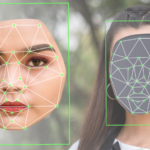I was recently interviewed about Cultural Appropriation for an AUT Bachelor of Communication Studies paper about Intercultural Communication. The first part of the interview was via email, then video. I feel that this information may be useful to others, so I am publishing it.
1: Karaitiana, you have spent many years challenging the use of inappropriate Māori images and names on products ranging from food and drink to events, and your website documents the steps you have taken in engaging with manufacturers and records their responses. In your experience, why is it that manufacturers so often feel that they can take any image or name to do with Māori culture and use it to brand a product?
History is full of examples of New Zealand colonial settlers fascination with Māori arts and crafts including their collection of tattooed human heads, Huia feathers, cloaks and many other taonga that were traded and stolen from Māori, then taken into private collections and museums overseas. This was the beginning of cultural appropriation and set the benchmark that it was OK to do so.
I believe there are two primary reasons for cultural appropriation by manufacturers in modern society. Firstly, in Māori culture, as with many other Indigenous cultures, most ownership is communal. We considered ourselves the guardians of property to protect and grow it for the next generation, not as property owners in a western sense. Therefore, there are no Indigenous Property Rights legislation to protect Māori culture; the Ka Mate Haka is the exception. Therefore, western laws govern the use of Māori words and designs. If the word does not have a TradeMark or Registered Patent, it is legally acceptable to use it. Even the use of tribal names occurs despite the owners being clearly identifiable.
There are no royalties to pay and no need for legal agreements when using taonga. But morally, it is wrong and is likely to cause offence to individuals, families and wider tribal groupings.
The second reason is the Tohunga Suppression Act 1907 that was repealed in 1962. This Act made all Māori theology (termed superstition or credulity) and traditional practices illegal. This made it illegal to speak out about any cultural appropriation with a number of symbols and images.
For many decades New Zealand companies and manufacturers have used Māori imagery and words to the extent that it is normalized today. Images and jewelry of a tiki that are often referred to as ‘Kiwiana’ is one example. Tiki is a Māori and Pacific deity of fertility. Yet, he is a common icon of New Zealand. We have seen overseas the outrage when a religious icon is used in satirical ways. But not in New Zealand.
The term “Kiwi” is a Māori word which has been used to describe New Zealanders since possibly the early 1900’s. Yet, the Kiwi is a sacred bird of Māori and features in many traditional knowledge forms such as sayings, songs and stories. In Māori theology the Kiwi is a senior descendant of Tane, the God of the forests and was well known to be a night time visitor. None of which resemble New Zealanders. Yet, as a society we have normalised cultural appropriation.
In New Zealand the WAI 262 claim and its recommendations offer ways to protect Māori traditional knowledge via new legislation and partnerships. The current government is working hard to implement these recommendations. In the meantime though, I do not believe any moral manufacturer has any excuse to appropriate Māori culture. Unlike 20 years ago, we live in an information society, most of us have Internet and are able to see and learn about cultural appropriation.
It is also important to state here, that Māori can also inappropriately use Māori imagery and do. In my experience this occurs when Māori have not been immersed in their own culture. After 260 years of introduced religions and and cultural assimilation practices, it is common for Māori to have been brought up exclusively in another culture other than Māori.
2: Quite a few of the issues have been to do with the use of Māori heads on food. Can you please explain why it is offensive in Māori culture to associate heads with food?
In Māori culture the head is sacred (tapu) and food is used to remove tapu. If food is touches the head, it becomes sacred and can not be eaten. Having an image of a head on a food or beverage container is offensive and implies that the food or beverage is polluted. If the image of a head is that of a real person, the offence is worse to the individual.
Using an image of a face or a human head, from a Māori cultural perspective shows that the person is worthless, nothing of any value what so ever, an ultimate insult. The beverage by having the image on the container would be contaminated and the people who were drinking or eating from that container would be likened to drinking or eating the flesh or body fluids of the person. There are a number of other issues involving spirituality that occur when adding a face or a human head to such a product.
In one case of a UK brewery, they had (it it is assumed as they never confirmed or denied it) taken an image from the Internet of a male with a tā moko doing a pūkana. A Tā moko is a graphical representation of an individual’s genealogy and or life’s achievements. Hence, no moko are the same. It is not clear whose Tā Moko was stolen and used in the branding. But in addition to the offence mentioned before, the whole genealogy of the individual would be offended. It is also peculiar in most cultures stealing someones family heirloom and genealogy to promote a food or beverage product.
3: In Aotearoa, we have a law that requires any use of the haka Ka Mate to be appropriately acknowledged (that said, I am not aware that any action has been taken under this). We also have the Trade Marks Māori Advisory Committee and the Patents Māori Advisory Committee to protect Māori IP in this country, but the latter two don’t help us overseas. It seems that the best way to challenge appropriation is moral pressure through social media and the mainstream media. Is this a fair assessment to make?
The legislation protecting the Ka Mate Haka has to my knowledge only been used to highlight to several groups that they can not use the Haka. I am not aware of any prosecutions.
The Trade Marks and Patents advisory committees operate under New Zealand legislation, therefore the only way either committee can intervene with international protection, is if an international company wants to protect their brand in New Zealand. Otherwise, there are no laws to protect Māori culture overseas.
I have been involved with tens of cultural appropriation brand issues with small to medium sized companies and one international conglomerate. It is my experience no brand wants to or can afford negative publicity or to be seen as unethical, even if it is from a minority Indigenous culture such as Māori in a small country at the bottom of the world.
My preferred method is to email the brand owners and go into detail how the branding is offensive and to give them a few days to reply. Most times I receive a reply from a shocked brand owner who is very apologetic, stating they never intended to offend anyone and that they have or are in the process of removing the offensive branding. Social media offers the offending manufacturer’s clients and business partners to see the offending and puts further pressure on the manufacturer to reconsider. The rule is to be professional and polite. Nobody likes to see aggressive and abusive messages online. The messages I use are similar to my initial email, full of facts.
In the cases where a brand owner simply ignores my correspondence, then social media is the best platform. Most brands have social media, so I use that to communicate with the brand owner. This is a passive aggressive way which works well. Social media can also be used in a very negative manner. I have seen in recent weeks social media being used by the community to attack a culturally offensive brand. The attacks from the public resulted in the company suffering a huge financial loss with re branding , legal fees, new Trade Marks and reputation damage.
My experience with both Māori and mainstream media is that there is a lot of interest in cultural appropriation. Media is a very efficient deterrent, but in my opinion should only be used as a last resort as the implications on the brand owner can be very serious. But sometimes, the media want a cultural appropriation story, when sometimes there is not a story there or the level of offence is minor.





Leave a Reply